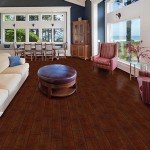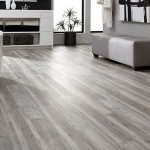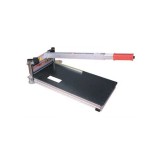Outdoor Flooring Material: A Comprehensive Guide
Outdoor flooring material plays a crucial role in enhancing the aesthetics, functionality, and durability of any outdoor space. From patios and decks to poolside areas and gardens, the right flooring can create a welcoming ambiance and withstand the elements for years to come. With a wide array of materials available, selecting the ideal option requires careful consideration of factors such as budget, style preferences, maintenance requirements, and climate conditions.
Types of Outdoor Flooring Material
The market offers a diverse range of outdoor flooring materials, each with its unique characteristics and advantages. Below are some of the most popular options:
1. Wood
Wood remains a classic choice for outdoor flooring, offering a natural, warm, and inviting aesthetic. Popular wood species include cedar, redwood, and teak, known for their durability and resistance to rot and insects. Wood flooring requires regular maintenance, including cleaning, sealing, and staining, to preserve its beauty and prolong its lifespan.
2. Composite Decking
Composite decking combines wood fibers with recycled plastic, resulting in a low-maintenance and highly durable material. Composite decking is available in various colors and textures, mimicking the appearance of natural wood. It resists fading, scratching, and staining, making it ideal for high-traffic areas.
3. Concrete
Concrete is a versatile and affordable option for outdoor flooring, offering excellent durability and longevity. It can be poured in various shapes and sizes, allowing for custom designs. Concrete flooring is often stained or painted to enhance its aesthetic appeal. However, it can be prone to cracking and requires sealing to prevent staining.
4. Pavers
Pavers are individual units made of concrete, brick, stone, or other materials. They offer a wide range of colors, styles, and patterns, creating a versatile and aesthetically pleasing flooring solution. Pavers are relatively easy to install and can be arranged in various layouts to create unique designs. They are durable and resistant to weathering, but may require occasional cleaning and sealing.
5. Natural Stone
Natural stone, including slate, granite, and flagstone, offers a luxurious and timeless look for outdoor spaces. It is highly durable and weather-resistant, making it ideal for high-traffic areas. However, natural stone can be expensive and requires careful installation to ensure proper drainage and prevent cracking.
6. Synthetic Grass
Synthetic grass, commonly known as artificial turf, provides a low-maintenance alternative to natural lawns. It requires minimal watering and upkeep, making it ideal for busy homeowners. Synthetic grass is available in various shades of green and textures, offering a realistic look and feel. However, it can become hot under direct sunlight and may require occasional cleaning.
7. Tile
Ceramic and porcelain tiles are durable and waterproof, making them suitable for outdoor areas that experience moisture and humidity. They are available in a wide range of colors, patterns, and finishes to complement any design style. Tile flooring requires professional installation and maintenance to prevent cracking and staining.
Factors to Consider When Choosing Outdoor Flooring Material
The choice of outdoor flooring material depends on several factors, including:
1. Budget
Outdoor flooring materials vary significantly in price, ranging from affordable options like concrete and pavers to more expensive choices like natural stone and composite decking. Consider your budget and choose a material that fits your financial constraints.
2. Style Preferences
Outdoor flooring should complement the overall design and style of your home and outdoor space. Consider the existing architectural elements, landscaping, and furniture to select a material that blends seamlessly with the surroundings.
3. Maintenance Requirements
Different outdoor flooring materials require varying levels of maintenance. Some materials, such as composite decking and synthetic grass, are low-maintenance, while others, like wood and natural stone, require more frequent cleaning and sealing.
4. Climate Conditions
Climate conditions play a significant role in choosing the right outdoor flooring material. Materials that withstand harsh weather conditions, such as extreme temperatures, heavy rainfall, and UV exposure, are crucial for ensuring long-term durability and performance.
Key Points to Remember
When selecting outdoor flooring material, remember the following:
1. Seek Professional Advice
Consult with a landscaping or flooring specialist to obtain expert advice on selecting the appropriate materials and installation methods for your outdoor space.
2. Prioritize Durability
Choose materials that are known for their durability and resistance to weathering, wear and tear, and fading.
3. Consider Aesthetics and Functionality
Select materials that meet your aesthetic preferences and functional needs, ensuring that the flooring complements your outdoor space and serves its purpose.
Choosing the right outdoor flooring material is an investment that enhances the beauty, functionality, and longevity of your outdoor space. By carefully considering the factors outlined above, you can select a material that meets your specific needs and preferences, creating a welcoming and inviting environment for years to come.

Your Definitive Guide To Outdoor Flooring Exploring Material Choices

7 Flooring Options For A Beautiful Patio Absolutely Outdoors

8 Outdoor Flooring Options D S

14 Outdoor Flooring Options Ultimate Guide

Outdoor Flooring Options Checkatrade

8 Outdoor Flooring Options D S

15 Beautiful And Affordable Outdoor Flooring Options Floorings

What Are The Best Outdoor Flooring Options

The Best Outdoor Flooring Options Fairmarket

The Best Outdoor Flooring Options Fairmarket
Related Posts








